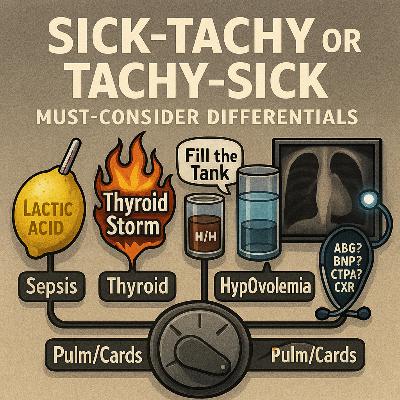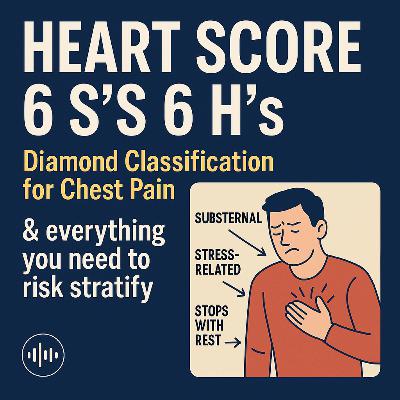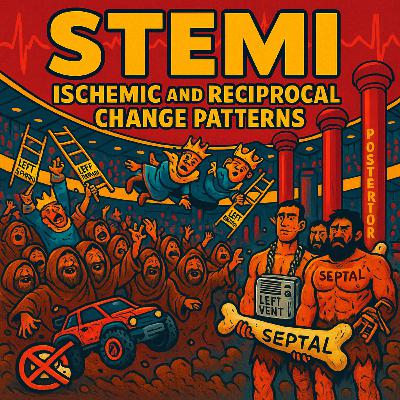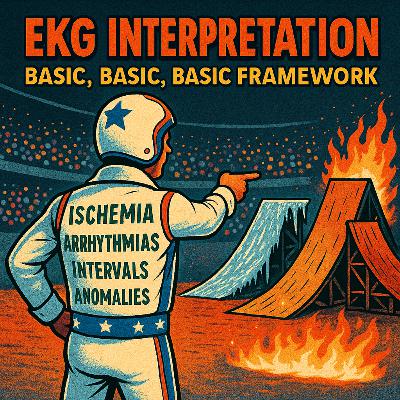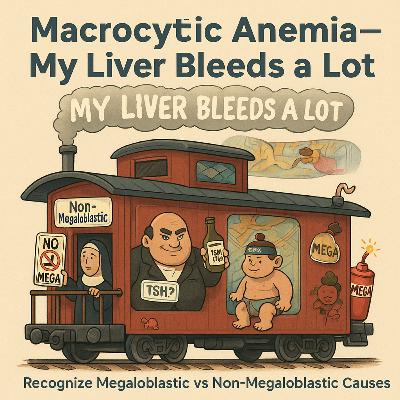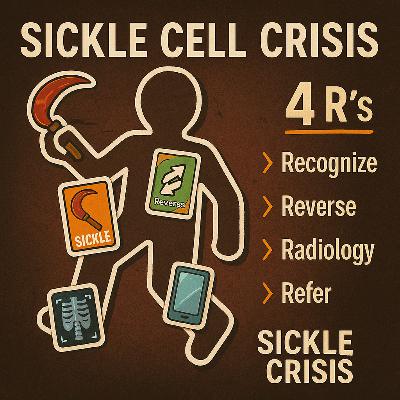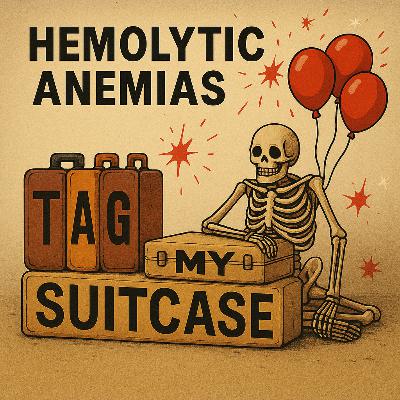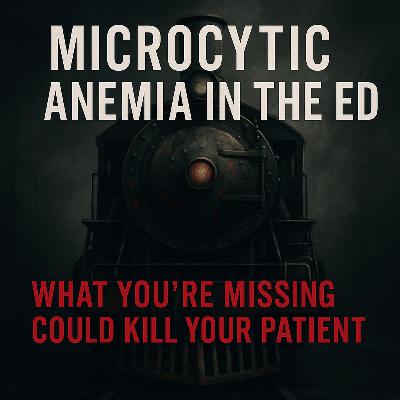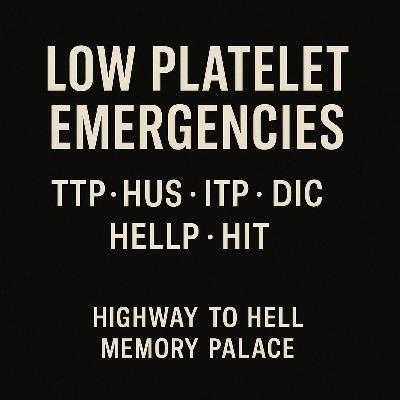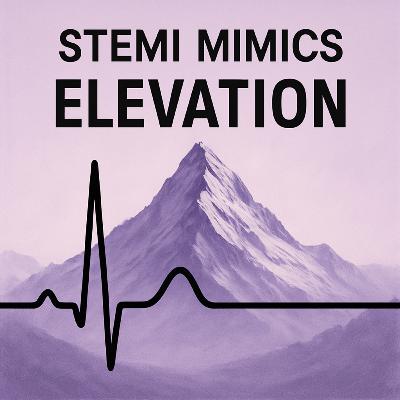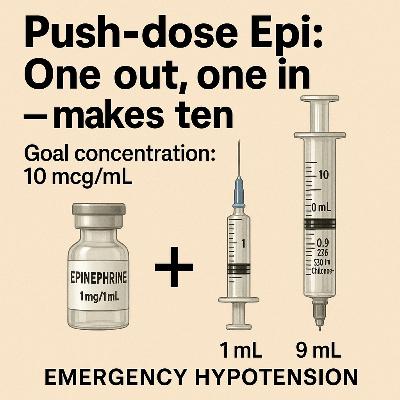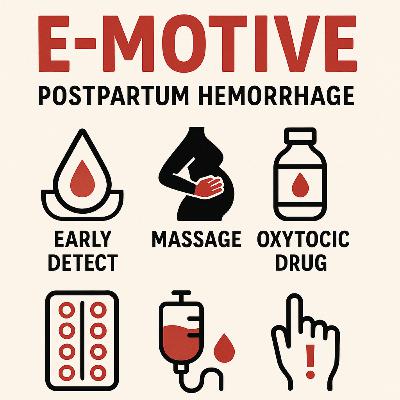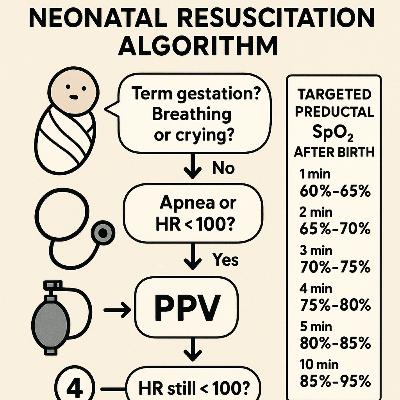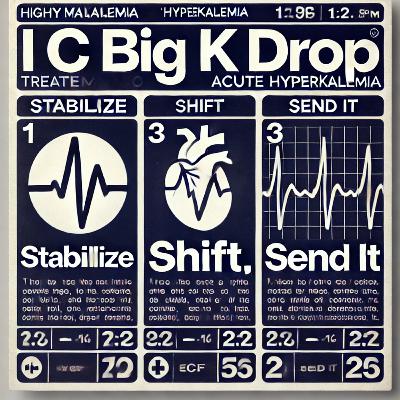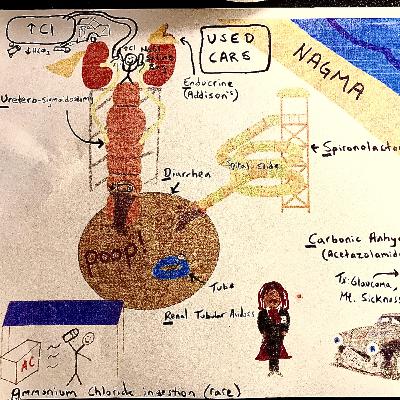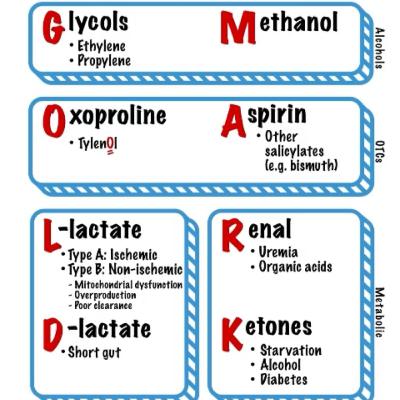Sick-Tachy or Tachy-sick: S.T.O.P. Secondary Compensations (Must-consider Differentials)
Description
When the heart rate blasts past 150, our reflex is often to grab a syringe—diltiazem, metoprolol, something to slow things down.
But here’s the hard truth: if the patient is in sick-tachy—tachycardia as a secondary compensation—slamming them with rate control can be catastrophic.
That racing heart rate may be the only thing keeping them alive.
Pausing to ask “sick-tachy or tachy-sick?” is what separates the new learner from the confident emergency clinician.
This episode is all about STOP-ping before you treat the number.
STOP is your mnemonic for the must-consider secondary compensations that drive tachycardia in the ED.
Each of these can mimic or mask primary arrhythmias, and missing them can lead to disaster:
⸻
🛑 STOP Mnemonic
S – Sepsis
• Tachycardia is often the earliest sign of infection.
• Always check a lactate—“Lactic Acid” should be etched in your mind.
• Bundle: fluids + source control.
• Be cautious in elderly or vague abdominal presentations; tachycardia may be your only clue.
T – Thyroid Storm
• Look for agitation, fever, tremor, weight loss history.
• Order TSH/T3/T4.
• Treatment anchor: Beta-blockers (BB) are first-line for rate control here—unique compared to other scenarios.
• Missing thyroid storm means missing a reversible cause of near-fatal tachycardia.
O – HypOvolemia
• Think bleeding (low H/H), dehydration, or anemia.
• Visual: half water / half blood glass—“Fill the Tank.”
• Don’t just reach for meds—give fluids, transfuse, and stabilize volume first.
• Remember also anxiety/pain can amplify sympathetic tone.
P – Pulm/Cards (Cardiopulmonary)
• Pneumonia – fever, infiltrate, hypoxia.
• Pneumothorax – sudden pleuritic chest pain, absent breath sounds.
• PE – unexplained hypoxia, pleuritic pain, risk factors.
• CHF (low EF) – the most dangerous one to miss before you push AV nodal blockers.
• Workup tools: ABG, BNP, CTPA, CXR, POCUS.
⸻
🧠 Why This Matters
• Sinus tachycardia is often appropriate—but it can mask life-threatening systemic illness.
• Medicating away compensation without treating the cause can pull the plug on the patient’s only survival mechanism.
• STOP first before flipping to tachyarrhythmia algorithms (SVT, AFib w/ RVR, VT, Torsades, VF).
⸻
⚡ Clinical Pearls
• Always ask: Stable or unstable? Unstable → Shock immediately per ACLS.
• If stable → STOP. Consider secondary compensations before rhythm drugs.
• POCUS is your left-hand tool—look for low EF before you dare to push AV nodal blockers.
• Gradual vs sudden onset helps distinguish sick-tachy (gradual, compensatory) from tachy-sick (primary arrhythmia, often sudden).
• Repetition is your friend—STOP, STOP, STOP until it becomes second nature.
⸻
🎧 In this episode, you’ll learn how to build a jetpack framework for HR >150 that keeps you calm under pressure, helps you avoid rookie mistakes, and makes sure you never miss the underlying killer hiding beneath “just a fast heart rate.”
STOP first. Then treat.

